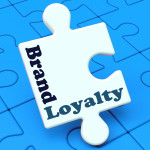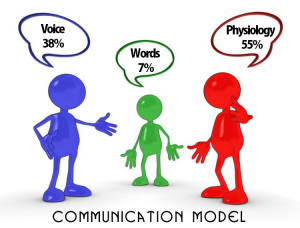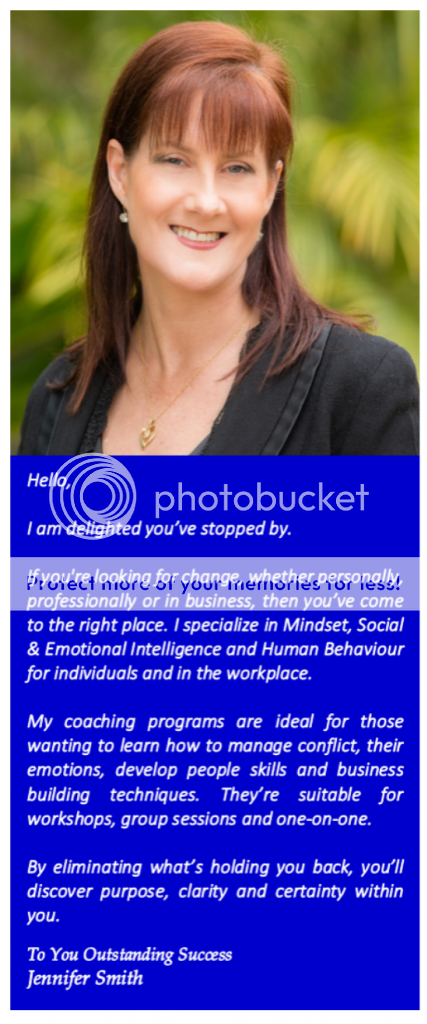
by Jennifer Smith | Jan 15, 2015 | Blog, Business, Marketing |
Discover the 7 Steps for Success in Branding Your Business
1. What is Brand Creation?
What does Branding Your Business mean? Branding or Brand Creation is perhaps one of the most important elements you need with any business. Branding is usually demonstrated in the form of a logo, symbol, wording, image or other type of medium which is used to identify who the business is. For example, a typical logo for a Pizza Shop might be an image of a Pizza with the words Joe’s Pizza above it. This tells the consumer that the business belongs to Joe and it is a Pizza Shop. Pretty simple example, but I am sure you get the picture. Essentially, the main point here is that it isn’t just big business that needs a brand; every business should have one. Having a brand doesn’t always mean a logo, your brand could be just words. A brand is what makes a business memorable to the customer, an identifier which allows them to quickly recognize and remember who you are.
Essentially, brand creation is all about YOU, your personality…it differentiates you and your business by telling a consumer who you are. Brand recognition is one of the quickest ways to build a following and create customer loyalty.
2. Why Is A Brand So Important?
 Creating a brand or logo for your business is essential to tell consumers who you are but it isn’t enough! Yes, consumers will quickly start to recognize your brand or logo but you also need to have the goods to back it up. For example, great customer service, follow up, ability to produce and deliver your goods. Without all of these elements, you may potential damage your brand and reputation and by doing so, quickly erode any following you might have built up. You will also risk consumer confidence in your product and once that has gone, it is very difficult to rebuild. Consumers by nature are driven by emotional response and providing the services and/or products you provide is consistent and meeting their requirements, your brand will remain strong and continue to grow.
Creating a brand or logo for your business is essential to tell consumers who you are but it isn’t enough! Yes, consumers will quickly start to recognize your brand or logo but you also need to have the goods to back it up. For example, great customer service, follow up, ability to produce and deliver your goods. Without all of these elements, you may potential damage your brand and reputation and by doing so, quickly erode any following you might have built up. You will also risk consumer confidence in your product and once that has gone, it is very difficult to rebuild. Consumers by nature are driven by emotional response and providing the services and/or products you provide is consistent and meeting their requirements, your brand will remain strong and continue to grow.
3. How Do I Get A Brand?
Before you race out and find a logo to brand your business with, there are several things you need to consider first.
For example:
– What is the product or service you are trying to market?
– Do you know who your target market is?
– Do you know the estimated age of your audience?
– Are you marketing to males, females or both?
– Are you aware of what your audience is interested in?
– Do you know where your audience sources your potential product or service now?
– Do you know how much money they make?
– Are you planning on promoting your business to Corporate, Small Business and/or Mums and Dads?
Without these basic elements answered, it will be very difficult to determine the type of brand you need to promote your business. Understanding the type of audience you intend to market to is crucial. Once your questions have been answered, you will be provided with the relevant material you need to establish the framework for your brand. Only then, can you decide what you want to do with your branding.
4. How Will Your Brand Be Used?
The next important component to contemplate is “HOW” and “WHERE” you want your brand to be used. Branding your business is great, but in order to justify the type of marketing you need to promote your business and decide what type of brand you want, you will need to decide WHERE your business is going and HOW the brand will be used.
WHERE
Consider what services you’re planning to use to promote your business. For example, do you want to do a Full Marketing Campaign, Social Media Marketing, Offline Advertising, Online Advertising, Flyers, TV, Radio etc.
HOW
In what capacity will your brand be used in your business? Will it be used electronically on an internet website, mobile website, social media sites and forums and/or as a hardcopy for business cards, documentation, letterhead, contracts, signage, pens etc.
Taking all of the above into account may take days, you need to be vigilant with your brand and make sure that your business is well covered from every angle. A good rule of thumb is to consider carefully the brand you want to use and then sit on it for a while and really think it through. Be sure you have chosen exactly what you want because once you release it to the public, it is not only costly to change but difficult. Remember, a brand is your identity and how consumers recognize your business.
5. What Will Your Brand Be?
Choosing a brand can be a challenge, especially if you have no idea what you want. A great way to start and find a name for your brand is to consider something catchy, simple and easy to read. Another useful tip is to use the same letters for each word, like the letter “C” and sticking to no more than 3 words. For example “Craig’s Curry Cave”. This is catchy, simple and easy to read and very memorable. The words describe what the business is, who owns it and is very much targeted to an audience looking for food.
Additionally, another great method is to write down a list of words related to your business and look for other words that may be associated with your name. A thesaurus could also be very useful when undertaking this task. Once you have chosen several ideas, say them out loud and see how they sound to you. Always ask others for their advice so you can compare and see which one stands out the most.
When you have narrowed your choices down to a couple, you should undertake a search on godaddy.com to establish whether or not the domain name would be available. If it isn’t I would strongly suggest that you search for another name because having your brand name the same as your domain name will strengthen your branding influence and capacity on the internet.
6. Does It Matter What Colour Your Brand Is?
It most certainly does matter what colour your brand is when branding your business. Communicating the right colour to the right audience is essential for building trust and appeal to your target market.
For example, it is known that the following colours communicate and epitomise trust to these particular markets and/or audience:
Red – (Gentle & Love)
Blue – (Professional, Trusting)
Green – (Natural, Environment)
Orange – (Optimism)
Purple – (Imagination)
Black – (Secretive)
Yellow – (Smart, Cheerful)
We all know that Facebook is blue and that is no accident, blue represents professionalism and trust and as we all see, has a huge following.
Decide what colour appeals to your market. Whilst you are doing this, you also need to consider the image or logo you are going to use because this will have an impact on your brand as well.
Images are equally important, you want a strong positive image, not something that emphasizes negativity and will turn your audience away. Again, keeping it simple is usually the best motto however, associating your brand with your name may require something a little more complicated and if that is the case, it is always recommended that you have continuity all the way through.
7. Review Process
Once you have decided on your brand, colour, type, image, market, audience and any other component required to complete the process, it is time to review and finalize.
You can prepare all of this work yourself; however consulting with a professional is always a good idea. Not only do you get an unbiased opinion but you also get a “qualified” eye to look over your work.
Of course, there is a cost and it is up to you whether or not you choose to take that path.
If on the other hand, you are seeking professional advice, always make sure you understand the costs before any work is started, be specific with your instructions and get everything in writing. It is essential that you are happy with the end result. Don’t be afraid to ask questions.
Once you have your brand in place, you can start marketing and promoting your business.
To Your Outstanding Success


by Jennifer Smith | Dec 22, 2014 | Blog, Communication |
Why Your Ability To Communicate Is The Master Key to All Doors?
Communication is the most used tool in our repertoire and sadly the most abused!
Have you ever considered why someone else gets the job over you?
Have you ever had your conversation abruptly cut short by the other party?
Have you ever had people fall asleep during your presentation?
If that is you, have you ever asked yourself, why does this happen?
It’s all in the way you communicate your message!
Let’s look at all 3 examples to the scenarios above:
- If you’re inspired, engaged, upbeat and full of energy during a job interview, chances are you’ll get noticed and may even get a call back. If you walk in with fear in your eyes, nervous, fidgeting, haven’t done your homework and uninspired, then pretty much forget everything you had planned to say, no matter how qualified, the likelihood is that you’re off the list permanently.
- If you’re speaking to someone and you start talking about yourself and are totally self-absorbed, not noticing or taking into consideration anything about the other party, you can pretty much guarantee your conversation will end with you being the only person present.
- If you’ve ever noticed people falling asleep during your presentation, the alarm bells should be ringing long and hard. This is a NO, NO….and is a tell-tale sign of boredom by the audience. It means that either your presentation skills needs some work or your content isn’t hitting its mark.
These are 3 examples of why good communication skills are essential.
What is effective communication?

Dr. Birtwhistle identified that:
7% was by the spoken word (verbal)
38% was by the tone of voice (tonality)
55% was by non-verbal clues (physiology)
We have 5 main ways (modalities) to communicate, let’s look at each.
- Verbally (speaking, listening, sounds)
- Visually (sight, writing, reading, pictures)
- Touch (sensory, feeling, emotion)
- Smell (scent, odor, aroma)
- Taste (flavour, palate, enjoyment)
Communication is the core of everything we do in life. Every time we interact in any capacity with another human being, we are communicating in some form. The great news is that ‘communication’ is a skill and can be learned. There are many ways you can learn new skills, through courses, learning from others, trial and error and practice, having a go and then having another go. These are all effective ways you can improve. Whichever one you decide works for you is great.
For professionals, it is imperative to master the skill of communication. Good oral and written skills are essential in the workplace either via technology, in person and over the phone.
You must be able to communicate your message clearly, concisely and effectively without hype, without fluff and without mistakes. You need to research your content, be accurate in what you present, check for and eliminate typographical errors, ensure that what you say whether written or oral makes sense and is cohesive.
In theory this may sound simple, but it not uncommon to come across poorly constructed messages because the communicator hasn’t taken the time to understand how to put it together.
There are several ways you can improve in each of the areas of communication. For the purpose of this article, I will use two communication styles as an example.
- Visual Communication
- One of the best ways to improve your writing skills is to read the content of others. Read books, articles, blogs, anything and everything you can get your hands on.
- If researching for a particular subject, then read the subject matter that applies to your research.
- If you don’t have a particular subject matter, read what interests you.
- Look at the style of the writing; examine how the article has been constructed. Once you start to read, you will begin to notice patterns in the way words or sentences have been written.
- Always check your language to ensure you’re not offensive.
- Practice writing smaller articles and then short stories and progress to an eBook or Book.
- Get others to critique your work, ask for opinions and feedback.
- Read what you have written out loud to yourself, does it sound okay to you? Would you be happy to present your work to others?
- Does your written communication make sense?
- Are your facts correct and on point.
- Are you using words you don’t understand to sound impressive?
- Verbal Communication
- One of the best ways to improve your speech is by saying your words out loud as if you’re speaking to an audience.
- Record everything you say and listen to the playback.
- Speak in front of the mirror and view what others see and hear.
- Slow your speech down to make sure each word is pronounced clearly.
- Elongate vowel sounds; this gives you a change in diction.
- Use all three voices (head, chest and middle) for variety.
- Use a mix of tonality (upbeat, full on, soft, calm, soothing).
- Ensure your airways are clear and your breath in through your nose, not your mouth.
These are just a few tips to help you on your way to better communication.
“Success is NOT about money and power. REAL success is about BUILDING RELATIONSHIPS. Get your Communication RIGHT and the rest will follow”. – Jennifer Smith
If you haven’t yet downloaded my eBook Creating Change The Complete Guide, I recommend you do so.
On the surface, the exercises may seem easy, in fact, the opposite is true. If you take the time to really understand the questions and answer with honesty, you will find you will Create Change in YOU!
If you liked this post, so I can continue to share more topics with you, I’d love it if you’d hit the “LIKE” button at the top of the page.

by Jennifer Smith | Dec 10, 2014 | Blog, Mindset |
Ask yourself, are you a Doer or a Thinker?
If you are looking at this question right now and saying to yourself, which one am I, then you are a ‘thinker’.
If you were a ‘doer’ you would already have the question answered.
So what is the difference?
A ‘thinker’ also known as a ‘gunna’ often has great ideas without the stamina to put those ideas into practice.
The language is also significantly different between the two.
Let’s review both:
The language a ‘thinker’ would use is:
- Can I do it?
- What If I don’t succeed?
- Should I do this?
- Is this possible?
- I’m not sure if I am the right person for the job?
- I tried but it doesn’t work for me, maybe I should let someone else do it.
As a ‘thinker’, you’re constantly sitting back waiting for things to happen or for others to make it happen.
The language a ‘doer’ uses is the complete opposite:
- I am successful
- I believe in myself
- I will do this now
- I have taken this step
- I must complete this task because it will move me onto this task
- I can do well by giving this everything I have
As a ‘doer’, you’re an action taker, prepared to step up and meet any challenge head on. You’re prepared to have a go even in the face of adversity, whether you win or lose doesn’t matter; you get out and give it your best, that is the strength of a real ‘doer’.
Have a look at any of the James Bond movies. They are all built around the act of ‘doing’ and taking action. Where would the stellar brand would be today if the action hero questioned his ability every time he was faced with danger?
It takes courage to believe in yourself, it takes courage to have a go and it takes courage to be you and that’s okay.
Give yourself permission to believe in your ideas and then go out and make them happen. Take the steps to put them into fruition, reap the rewards of the fruits of your labour and notice the difference in you.
Your confidence will grow;
Your business will increase;
Your desire to keep doing will surge; and
Your language will change.
I can’t promise it won’t be scary;
I can’t promise it won’t feel strange;
I can’t promise you success;
What I can promise you is as a ‘doer’ the doors of opportunity will open, as a ‘thinker’ they’ll always remain closed.
Take a leap of faith in yourself, remove your ‘thinking hat’ and put on your ‘doing hat’.
Step up, have a go and watch how people start to notice you and follow what you’re doing.
Remember, there is no failure only feedback!
If you haven’t yet downloaded my eBook Creating Change The Complete Guide, I recommend you do so.
On the surface, the exercises may seem easy, in fact, the opposite is true. If you take the time to really understand the questions and answer with honesty, you will find you will Create Change in YOU!
Visit my website https://jennifersmith.com.au for a FREE COPY.

by Jennifer Smith | Dec 9, 2014 | Blog, Mindset |
What are 3 Effective Ways to Remove Uncertainty?
With uncertainty comes wonder, confusion and often alienation.
If is only when we stop and question what ‘uncertainty’ actually is that we are able to understand the power of the word. Uncertainty means different things to different people.
Essentially, it is a sense of not knowing and not understanding what is happening around us.
It is uncertainty of self, not of others.
So how can you combat uncertainty?
How can you move past the uneasy feeling of uncertainty you have?
How can you become more certain in a way that sustains you?
Here are three effective ways you can work through uncertainty and start to put your life back on track:
1. Self-Love
You must focus on what it is that you can control in your life and that is you. It is essential that you take care of yourself, believe in yourself and put yourself first.
Listen to what your body is telling you.
Ensure you get enough sleep; nourish your body with the right food and exercise for both physical and mental health.
2. Believe
If you don’t believe in you, how can you possibly expect others to believe in you?
Become a model to others, it is your time to shine. Take the time to smell the roses, you have earned it! Start to believe in you and others will do the same.
Forgive yourself for past mistakes, learn from them and move on, you are worth it.
Don’t let uncertainty creep back in, every time it starts to raise its head, take a deep breath, close your eyes and remember something amazing in your life. Concentrate on how you feel in that moment and every time you feel down, take yourself back to that moment in time when you felt amazing. Put yourself back in those shoes and tell yourself, that is how it is now.
3. Choice
Don’t get distracted by your surroundings, don’t get distracted by outside influences you have no control over.
You decide how it is to be.
You decide where you go from here.
All the worry in the world won’t help, it doesn’t solve problems, it only adds to them. Remember, most things you worry about never happen, most things you worry about are in the past, most things you worry about concern your health or are insignificant and not worth your time.
Concentrate on what you can control.
Concentrate on what is worthwhile and makes a difference for the good.
Concentrate on how you can add value to others.
If you stop being self-serving thinking only of you, your worries will begin to disappear; the heavy burden you carry will start to diminish and your inner self will be hungry to serve others.
Be a guiding light for others to follow and watch how uncertainty becomes certainty.
If you haven’t yet downloaded my eBook Creating Change The Complete Guide, I recommend you do so.
On the surface, the exercises may seem easy, in fact, the opposite is true. If you take the time to really understand the questions and answer with honesty, you will find you will Create Change in YOU!
Visit my website https://jennifersmith.com.au for a FREE COPY.

by Jennifer Smith | Nov 14, 2014 | Blog, Business, Marketing |
10 Things You Should Consider Before Buying A Laptop
Purchasing technology of any kind can be a daunting task and confusing at the best of times especially, when products are changing and updating at such a fast pace.
Where do you go for advice?
A really good question and for those who are not very technically savvy or even have a basic understanding of the different hardware specifications, these 10 things should help you cut through the jargon and buzzwords when you next consider buying a laptop.
So let’s break them down point by point:
1. Power
Battery life is the most essential element to a laptop. After all, this is generally the main feature buyers’ look for when they seek to purchase a laptop. A longer life battery enables greater flexibility for the end user.
In the past, there has been much conjecture over the battery performance in many laptops with sustainability in their lifespan often under delivering. That said, the convenience of maneuverability often outweighed the shorter battery life and laptops became very popular. With the recent introduction of the Ultrabook, manufacturers have taken battery life to a whole new level offering 5+ hours of battery. These batteries are stored in the chassis of the machine which allows for greater capacity.
TIP: Ensure you check the manufacturing instructions for both battery capacity and replacement options
2. Screen Size
Often the screen size of a laptop is very much a personal choice. Some consumers will choose the size of the laptop based on their needs whilst others go for a particular resolution. The best on the market at present is Apples’ Retina Macbook Pro with 2880 x 1800 resolution. I suggest before leaping straight in and choosing this model, do a full review to ensure this is exactly what you are looking for because each machine does have its drawbacks! This one is quite pricey.
One essential element to consider with the screen size is the technology used to make them. The majority of laptop screens are made from Twisted Nematic (TN) panels, ironically this technology is also used in the making of most desktops monitors.
Another thing to consider is whether or not you are getting a matte or glossy finish. Glossy finishes look great but can catch reflections, so watch out for this one. Again, it usually comes down to personal taste and the look you are after.
TIP: With the majority of laptops on the market, usually the smaller the screen, the lower the resolution – this is usually the case in cheaper models.
3. Storage
Most modern laptops have their technology “sealed” thereby restricting the ability to upgrade the hard drive. A great feature of most of these newer laptops as an alternative solution, is that installation of the USB 3 which allows for an external hard to be connected for extended storage. This is a real bonus.
TIP: Caching your computer on a regular basis will assist to keep costs down and overall improve system performance.
4. Memory
How much memory is really enough, that is very much an individual question for the intended user. The biggest trap to watch out for here is to find a laptop that will suffice and service your needs. The latest release of most laptops on the market don’t allow the option to increase their memory which was basically sacrificed for weight. So if you purchase one of these laptops, you’re done!
Don’t fall into the trap when purchasing one of these laptops with the idea of upgrading the memory down the track because you could be in for a whole lot of heartache and expense purchasing a new one. For the majority of user’s 4GB is ample capacity but for those who are serious contenders and user their laptop in a business capacity, I would tend to recommend 8GB. Both the Apple and Ultrabook are two models which come with 8GB. Remember, always do your research and before you buy your laptop ensure that it will fit your needs.
TIP: Provided you have a decent amount of RAM, capacity won’t be an issue for you – but make sure you do your due diligence
5. Graphics
Big decisions need to be made here! If you use programs like Photoshop and play around with a lot of graphics in general, enjoy playing lots of games, video editing etc. then you will need a laptop with high performing graphics features. It is suggested that when you are looking to purchase your laptop, consultation with the Retailer is recommended given the complexity of options available. For example, AMD’s APU’s will perform marginally better than Intel’s processor graphics.
TIP: Choosing the correct option will save frustration down the track as different graphics processors will deliver very different performances
6. CPU’s
Are you aware that laptops have increased their market share and are now dominating the marketing place over desktops!
If you are looking for a processor with plenty of grunt, you can’t go past Intel’s Core I series of CPU’s or AMD’s A series APU’s. There are plenty of options on the market. To distinguish, some of the higher end Core i7 models will end with the suffix QM, an example might be Core i7-3610QM. Whilst mainstream dual-core laptops will have the suffix M, an example might be Core i5-3360M. What does this mean? Generally speaking, these processors have a TDP of 35W and will run between 2GHz and 3GHz. The bulk of mainstream laptops will contain these processors and will provide a solid mix of performance and battery life.
TIP: Choosing the correct option will save frustration down the track as different graphics processors will deliver very different performances
7. Expandability
It is always a good idea to look at the types and numbers of ports available on the laptop. This will have significant impact over what you can and can’t do. The introduction of the UBS 3 has minimised the impact this issue may have had in the past. So what is a UBS 3? The USB 3 controller has the ability to run up to four ports whereas the majority of laptops only have three.
TIP: The Thunderbolt, an alternative to the USB3 is mostly confined to Apple laptops and offers double capacity but it is also a very expensive alternative
8. Networking
Technology sure has come ahead leaps and bounds. The use of Wi-Fi and desire to build laptop chassis’ far thinner than ever before has pushed the boundaries. Consequently, the new Ultrabook doesn’t require Ethernet to qualify under Intel’s specifications. On the market at present, the best available wireless standard is 802.11n and is supported by all modern laptops wireless chips.
TIP: Do your research, there are laptops out there that use fold-down Ethernet ports where the chassis is too thin for a more traditional port.
9. Software
Always check out the software packages offered with your intended purchase of the laptop. Windows 8 is now out on the shelves and available for the comsumer to purchase. I suggest you take a good look at the operating system you are purchasing. The newer laptops will be loaded with either Windows 7 and an upgrade option to Windows 8 or Windows 8. Usually the operating system will be the Home Version but with business products this is usually upgraded to the Professional Version. Often trial versions of other software are thrown into the deal as a nice little bonus eg. Microsoft Office, Antivirus Software, other smaller utility programs, all which are designed for the upsell to the full version. You are not obligated to upgrade from a trial version to a full version of software especially if you already have your own license.
TIP: If you don’t wish to use the trial version of these software packages, make sure you uninstall them from your laptop before uploading your licensed version.
10. Chassis Design
Comfort, style, feel, does it all really matter? Of course it does! Generally, one of the biggest reasons a consumer purchases a particular item is based on looks, touch and then overall suitability. Always give the laptop you are intending to purchase a thorough test drive before you buy. Ensure that they keyboard suits your hands and that the layout of the laptop underneath the lid is positioned how you like. With constant use, if these things aren’t to your liking then it won’t be long before you are again looking for another laptop.
TIP: Test drive EVERY key on the keyboard to ensure that none are sticking. It is a hard road if you have loaded everything you want on the laptop and find you have to start again because you have a faulty machine. – I know, I have been there….
Thanks for reading my Article – “What Are The 10 Things You Should Consider Before Buying A Laptop?” .
I hope it provided you with some value. Please leave your feedback and comments below.
To Your Outstanding Success


by Jennifer Smith | Sep 15, 2013 | Blog, Communication |
 How We Communicate!
How We Communicate!
Human beings process information in 3 different ways.
Your response and behaviour will be influenced by how effective someone is in communicating to you and how you interpret that communication.
The three types in the ‘Communication Model’ are:
1. WORDS (language) we hear represent 7% of what influences us
2. VOICE (tonality) represent 38% of what influences us
3. PHYSIOLOGY (body language) represent 55% of what influences us
For example:
Image you’re listening to a really cool song, you love the beat but don’t particularly like the lyrics too much. You find that in listening to the song it takes hold and get’s you in.
Why? The words don’t interest you but the beat does.
Tonality is a stronger ‘influencer’ in the Communication Model.
If you would like to learn more, visit my page Extended Disc to find out how Effective Communication can work for you.

 Creating a brand or logo for your business is essential to tell consumers who you are but it isn’t enough! Yes, consumers will quickly start to recognize your brand or logo but you also need to have the goods to back it up. For example, great customer service, follow up, ability to produce and deliver your goods. Without all of these elements, you may potential damage your brand and reputation and by doing so, quickly erode any following you might have built up. You will also risk consumer confidence in your product and once that has gone, it is very difficult to rebuild. Consumers by nature are driven by emotional response and providing the services and/or products you provide is consistent and meeting their requirements, your brand will remain strong and continue to grow.
Creating a brand or logo for your business is essential to tell consumers who you are but it isn’t enough! Yes, consumers will quickly start to recognize your brand or logo but you also need to have the goods to back it up. For example, great customer service, follow up, ability to produce and deliver your goods. Without all of these elements, you may potential damage your brand and reputation and by doing so, quickly erode any following you might have built up. You will also risk consumer confidence in your product and once that has gone, it is very difficult to rebuild. Consumers by nature are driven by emotional response and providing the services and/or products you provide is consistent and meeting their requirements, your brand will remain strong and continue to grow.









